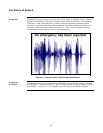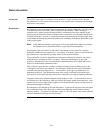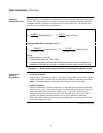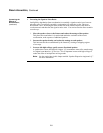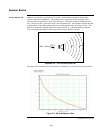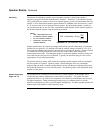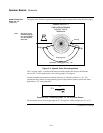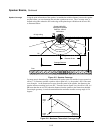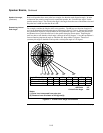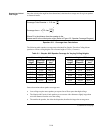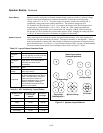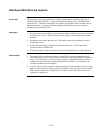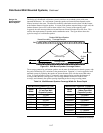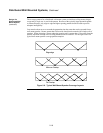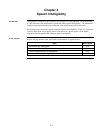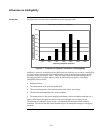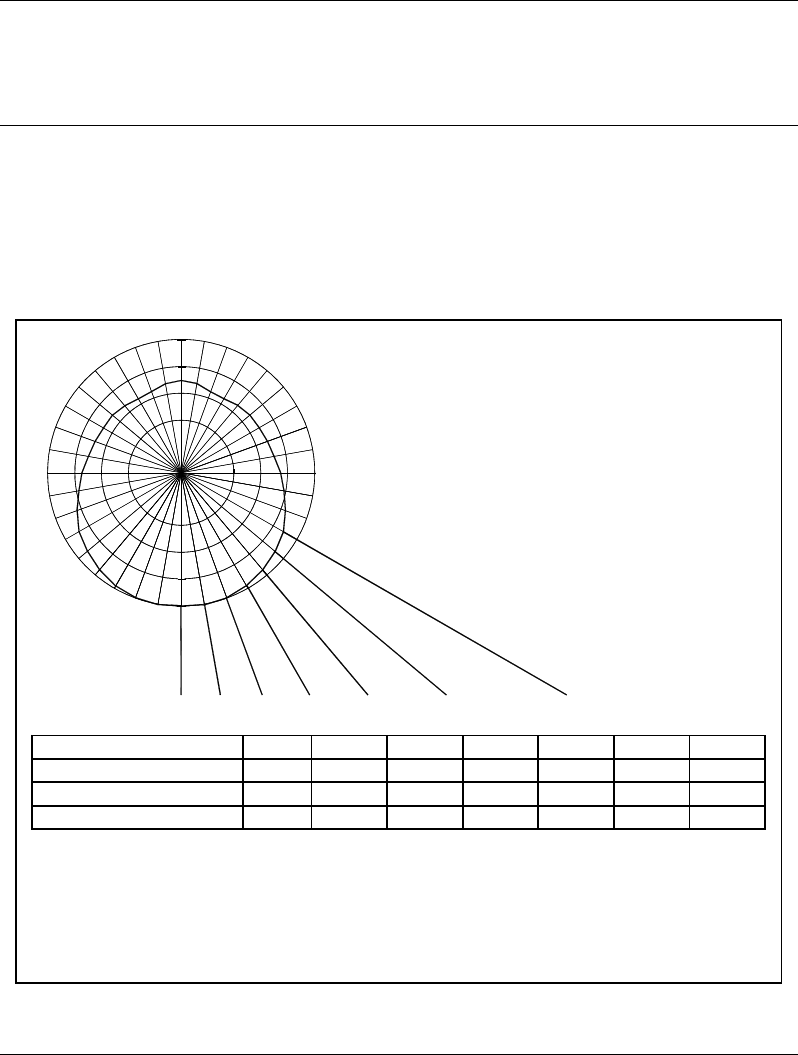
2-13
Real world speakers have some polar loss at angles less than the rated dispersion angle. In order
to determine the actual coverage area for a particular speaker, the “Critical Polar Angle” for the
speaker must be found. The critical polar angle is the angle where the sum of the distance loss and
the polar loss is 6 dB less than the on-axis SPL.
For example, consider the Simplex 4902 series speakers. The dB loss as a function of angle off-
axis can be determined from the polar plot as illustrated in figure 2-7 below. Because this speaker
has symmetrical dispersion, only the data from one quadrant is required. Adding the polar losses
and distance losses yields the total loss for the speaker along the listener plane. Inspecting the
total loss data reveals that the critical angle is between 40 and 50 degrees. Using the spreadsheet’s
forecast function pinpoints the angle at which the SPL drops 6dB as 51degrees. Because of
symmetry this angle is doubled to end up with a critical polar angle of 102 degrees.
Figure 2-7. Critical Polar Angle Calculations
Continued on next page
Speaker Basics, Continued
Speaker Coverage,
(continued)
Determining Critical
Polar Angle
0° 10° 20°
30°
40° 50° 60°
Angle Off-Axis (θ) 0° 10° 20° 30° 40° 50° 60°
Polar Loss (1) 0.0 dB 0.0 dB -0.1 dB -0.5 dB -1.3 dB -1.8 dB -3.0 dB
+ Distance Loss (2) 0.0 dB -0.1 dB -0.5 dB -1.2 dB -2.3 dB -3.8 dB -6.0 dB
= Total Loss 0.0 dB -0.1 dB -0.6 dB -1.7 dB -3.6 dB -5.6 dB -9.0 dB
52°
104°
Notes:
(2) Distance Loss calculated as 20*log(cos(θ))
-6dB Point
Critical Polar Angle
(1) Polar Loss interpreted from polar plot



